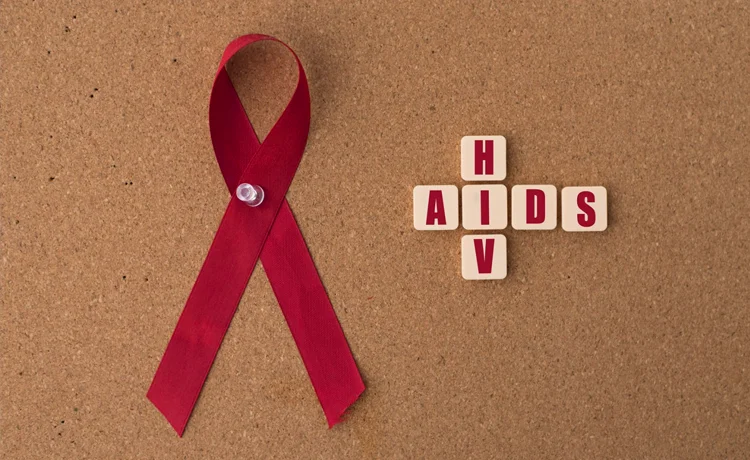How Is AIDS Transmitted? Understanding the Routes of Infection
It’s crucial to first clarify the difference between HIV and AIDS:
-
HIV (Human Immunodeficiency Virus) is the virus that attacks the body’s immune system.
-
AIDS (Acquired Immunodeficiency Syndrome) is the final, most severe stage of an untreated HIV infection, characterized by a severely damaged immune system and the appearance of opportunistic illnesses.
Therefore, people transmit the HIV virus. If left untreated, HIV can lead to AIDS. The transmission of HIV requires contact with certain specific body fluids from a person who has a detectable viral load.
The Four Primary Routes of Transmission
HIV is transmitted through specific body fluids that contain a high concentration of the virus. These fluids are:
-
Blood
-
Semen and Pre-seminal fluid
-
Vaginal fluids
-
Rectal fluids
-
Breast milk
For transmission to occur, these fluids must come into contact with a mucous membrane (found in the rectum, vagina, penis, and mouth), damaged tissue, or be directly injected into the bloodstream.
1. Sexual Transmission (The Most Common Route)
HIV can be transmitted during unprotected sexual contact (vaginal, anal, or oral) with a person who has HIV. The virus can enter the body through the mucous membranes of the genitals, rectum, and, less commonly, the mouth.
-
Anal Sex: This is the highest-risk sexual activity. The rectal tissue is fragile and can tear easily, allowing the virus direct access to the bloodstream.
-
Vaginal Sex: This is also high-risk. HIV can be transmitted from a man to a woman, a woman to a man, or between women.
-
Oral Sex: The risk is significantly lower but not zero. Transmission is possible, especially if there are cuts, open sores, or gum bleeding in the mouth of the person performing oral sex.
What increases sexual risk?
-
Having a sexually transmitted infection (STI) like syphilis, herpes, or gonorrhea, which can cause inflammation or sores.
-
Having a high viral load (the person with HIV is not on treatment).
2. Transmission Through Blood
HIV can be transmitted through direct contact with infected blood. The most common ways this happens are:
-
Sharing Needles and Syringes: This is a very efficient mode of transmission for people who inject drugs. Sharing any equipment used to prepare or inject drugs (like cookers, cotton, or water) can also transmit HIV.
-
Needlestick Injuries: Healthcare workers can be at risk if they are accidentally pricked with a needle contaminated with HIV-positive blood. This is a relatively rare occurrence, especially with modern safety protocols.
-
Blood Transfusions and Organ Transplants: In most developed countries with rigorous screening procedures (like the U.S. and UK), this risk is extremely low—almost negligible. However, it was a major route of transmission before 1985 when widespread screening began.
3. Mother-to-Child Transmission (Perinatal Transmission)
An HIV-positive mother can transmit the virus to her child during:
-
Pregnancy (through the placenta)
-
Childbirth (during delivery through contact with blood and vaginal fluids)
-
Breastfeeding (through breast milk)
Crucial Note: With proper medical care and treatment, the risk of a mother passing HIV to her baby can be reduced to less than 1%. This involves the mother taking HIV medication during pregnancy and childbirth, and the baby receiving medication for a short time after birth.
How HIV Is NOT Transmitted: Dispelling Myths
It is equally important to understand how HIV cannot be spread. You cannot get HIV from:
-
Casual contact like hugging, shaking hands, or sharing toilets.
-
Kissing (even deep kissing, unless both partners have significant open sores or bleeding gums).
-
Sharing food, drinks, or utensils.
-
Mosquitoes or other insects.
-
Saliva, tears, or sweat (unless visibly mixed with blood).
-
Through the air, like the cold or flu virus.
The Most Effective Prevention Strategies
Understanding transmission leads directly to effective prevention:
-
Use Condoms: Consistent and correct use of male or female condoms during sex is highly effective.
-
Pre-Exposure Prophylaxis (PrEP): A daily pill for HIV-negative people at high risk that is over 99% effective at preventing HIV through sex.
-
Treatment as Prevention: People living with HIV who take their medication as prescribed and maintain an undetectable viral load have effectively no risk of sexually transmitting HIV to their partners. This is known as U=U (Undetectable = Untransmittable).
-
Never Share Injection Equipment: Use new, sterile needles, syringes, and other drug preparation equipment every time.
-
Get Tested and Treated for STIs: This reduces the risk of both acquiring and transmitting HIV.
-
Prenatal Care: All pregnant women should be tested for HIV to begin treatment if necessary and prevent transmission to the baby.
Frequently Asked Questions (FAQ)
1. Can I get HIV from oral sex?
The risk is very low but not zero. Using condoms or dental dams can eliminate this small risk.
2. Is the risk the same for the “top” and “bottom” in anal sex?
No. The receptive partner (“bottom”) is at a higher risk than the insertive partner (“top”) because the rectal tissue is more susceptible to tearing.
3. Can I get HIV from a blood transfusion?
In countries with advanced blood screening systems, the risk is virtually zero.
4. How long does HIV survive outside the body?
HIV is a fragile virus and does not survive long outside the human body. Once exposed to air, blood or other fluids dry out, and the virus becomes inactive and cannot cause infection.
5. If my partner is undetectable, can they still transmit HIV?
No. Numerous major studies have conclusively shown that people with an undetectable viral load cannot sexually transmit the virus. This is a cornerstone of modern HIV prevention.

